European Union maps
- Published
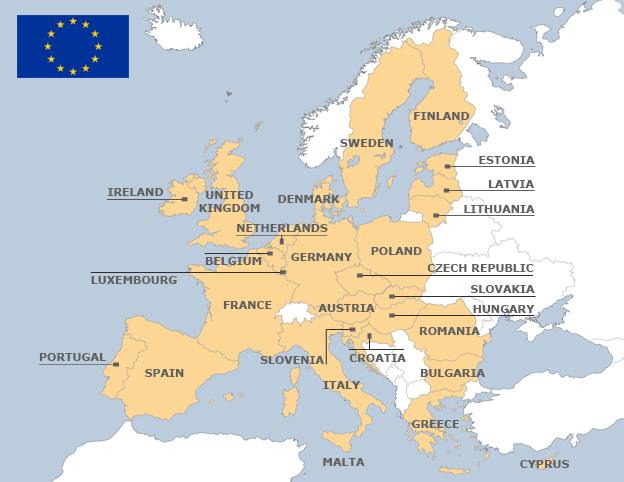
The forerunner to the European Union was formed by six countries in 1952 and now has 28 members with a combined population of more than 500 million people.
It is set to expand even further, with several countries being considered for membership.
The European Union has its roots in the 1951 agreement by France, Germany and four other countries to pool coal and steel supplies, with the aim of ending "age-old rivalries".
In 1993 EU leaders adopted the so-called Copenhagen criteria setting standards for democracy, human rights, the rule of law, minority protection and civilian control over the military that all candidate states must meet to become members.
The maps below show how the economic bloc has grown over the years.
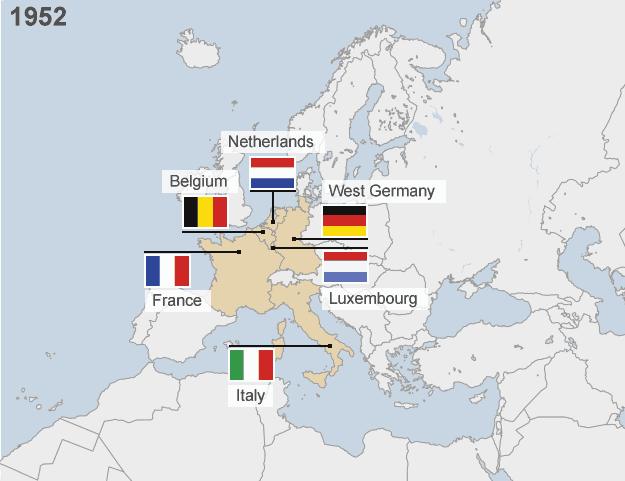
The European Coal and Steel Community came into existence in July 1952. The Treaty of Rome creating a broader "common market" was signed five years later.
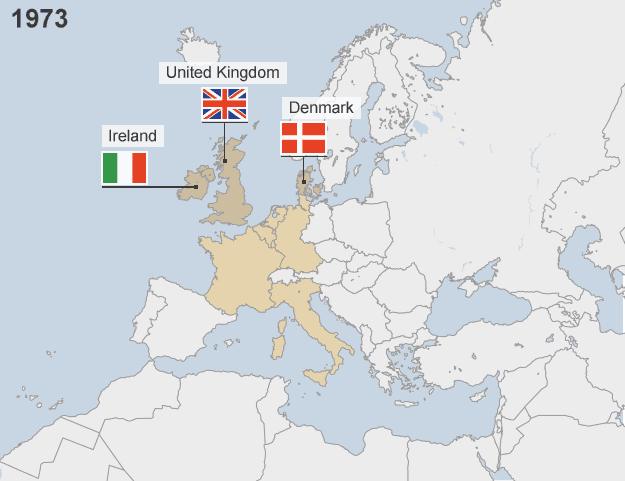
The first enlargement took place in 1973, bringing in Denmark, Ireland and the United Kingdom. Norway voted not to join
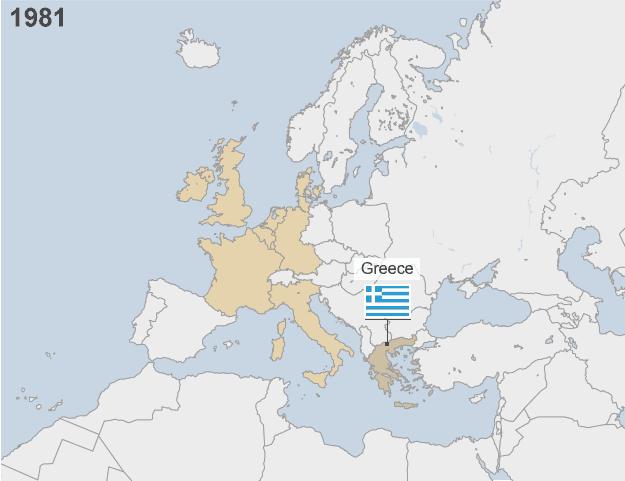
Greece became the 10th member in January 1981
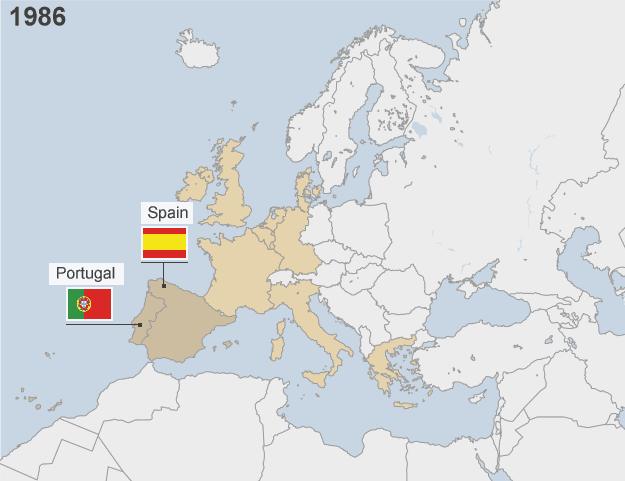
Spain and Portugal joined on 1 January 1986
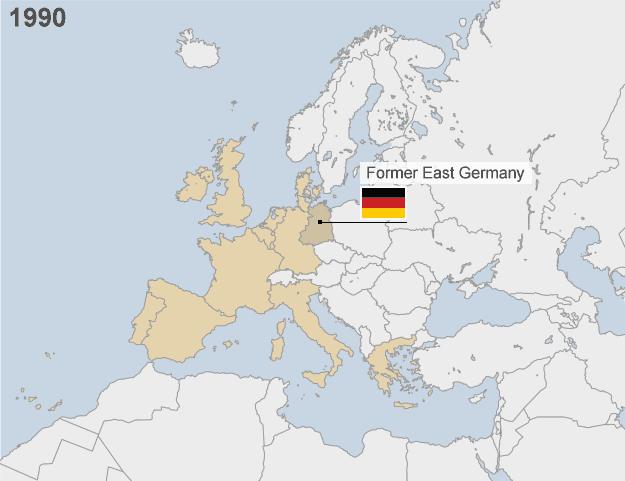
East Germany became part of the EU when Germany formally reunified on 3 October 1990
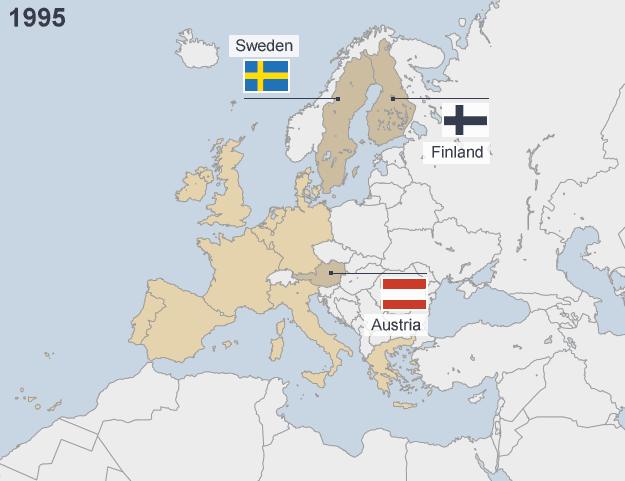
Austria, Finland and Sweden joined in 1995. Norway voted against EU entry in a referendum in the previous year
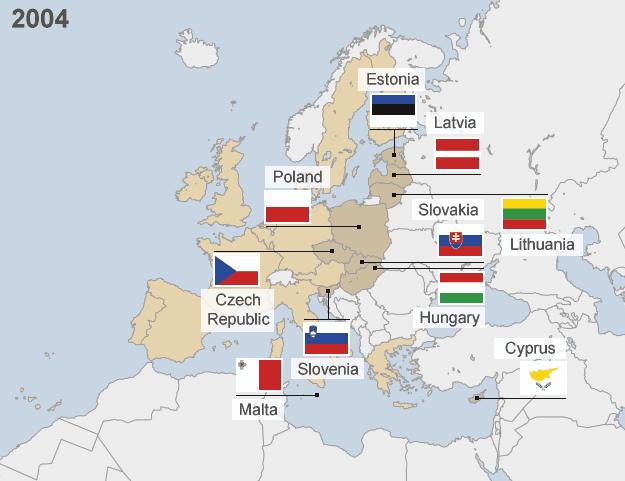
Eight countries of central and eastern Europe — the Czech Republic, Estonia, Latvia, Lithuania, Hungary, Poland, Slovenia and Slovakia — joined the EU, finally ending the post-war division of Europe. Cyprus and Malta also become members in what has been the EU's biggest enlargement
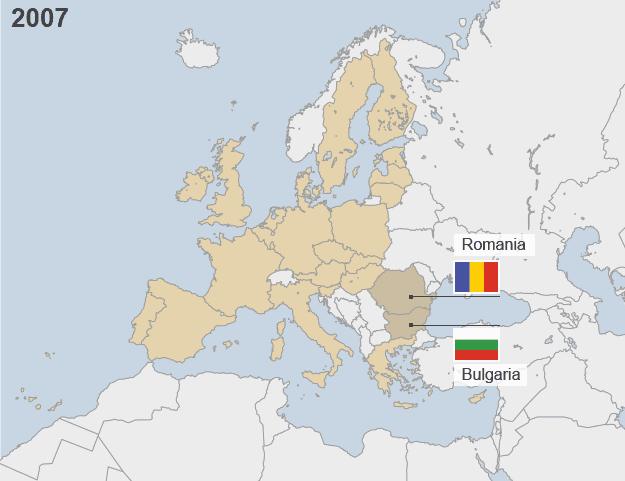
Romania and Bulgaria joined the EU in 2007
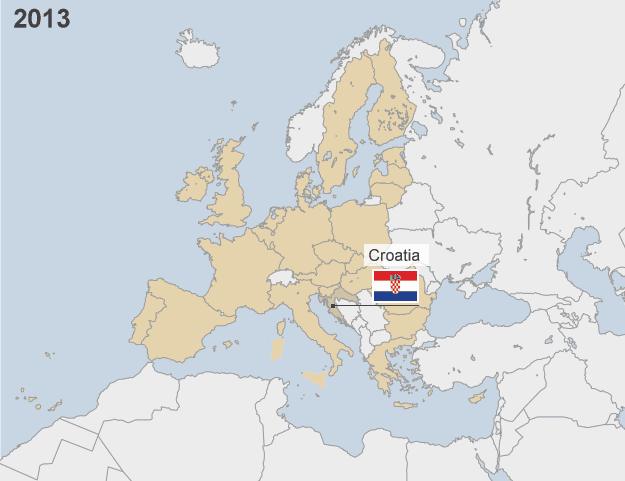
Croatia became the newest member in 2013
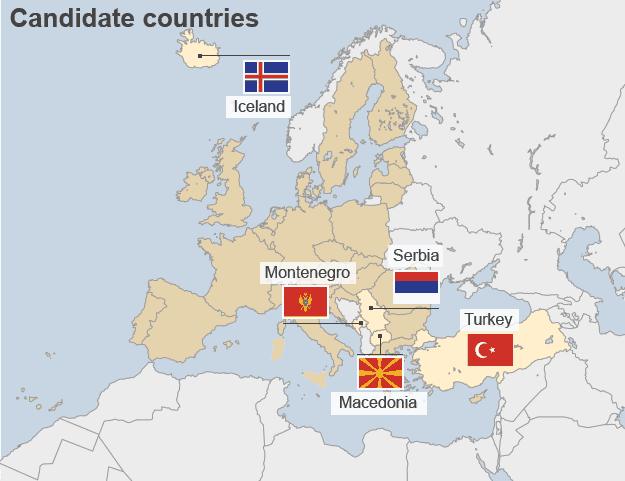
Five states are candidate countries, and are in the process of integrating EU legislation into national law